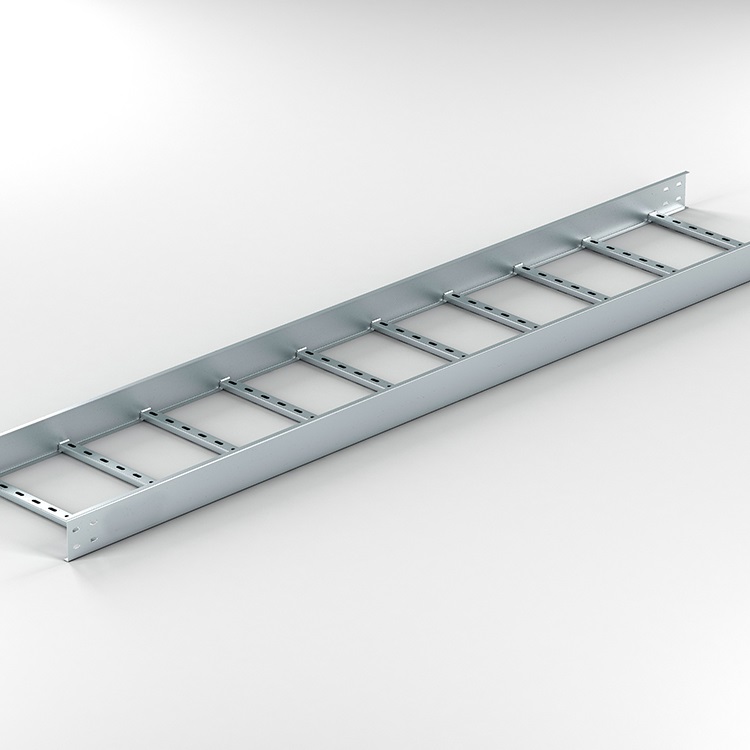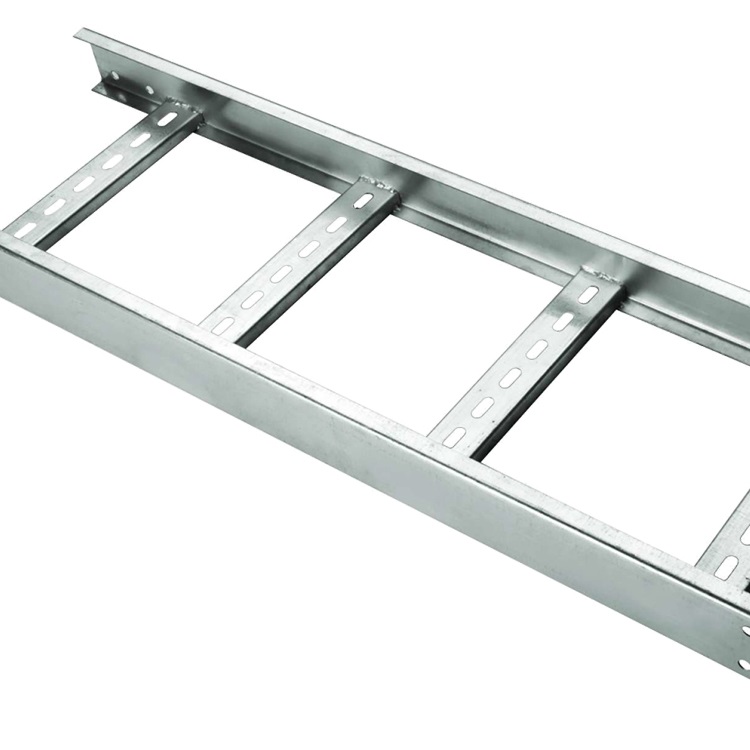Ladder Type Cable Tray
Ladder Type Cable Tray
Ladder type cable tray is a type of cable management system used for supporting and organizing electrical cables and wires in various industrial and commercial installations. It is named after its resemblance to a ladder due to its structure consisting of parallel side rails connected by rungs.
Here are some key features and aspects of ladder type cable trays:
Structure: Ladder type cable trays are typically made of metal, such as steel or aluminum, although fiberglass reinforced plastic (FRP) variants are also available. The side rails are usually formed from folded metal sections, creating a ladder-like appearance.
Rungs: The rungs of the cable tray are horizontal cross members that connect the side rails. They provide support for the cables and maintain proper spacing and separation between them. The rungs are often perforated or solid, depending on the specific application and requirements.
Ventilation: Ladder type cable trays offer good ventilation and airflow around the cables due to their open design. This feature helps dissipate heat generated by the cables, preventing overheating and maintaining their performance and lifespan.
Cable Support: The open structure of ladder type cable trays allows for easy installation and removal of cables at any point along the tray’s length. Additionally, they provide ample space for managing large quantities of cables, making them suitable for heavy-duty applications.
Accessories: Various accessories can be used with ladder type cable trays to enhance their functionality. These include bends, tees, intersections, reducers, covers, and dividers, among others. Accessories enable the tray system to adapt to different layouts, directions, and cable routing requirements.
Installation: Ladder type cable trays can be mounted on walls, suspended from ceilings, or supported by floor stands or other structures, depending on the installation environment and specific needs. The trays are typically connected using couplers or connectors to create longer runs or make directional changes.
Application: Ladder type cable trays are commonly used in industrial settings, such as power plants, manufacturing facilities, refineries, and warehouses. They are also suitable for commercial buildings, data centers, and telecommunications installations where large amounts of cabling need to be organized and supported.
It’s important to note that when designing and installing cable tray systems, it’s necessary to follow applicable electrical codes, standards, and safety guidelines to ensure proper cable management and minimize any risks associated with electrical installations.


